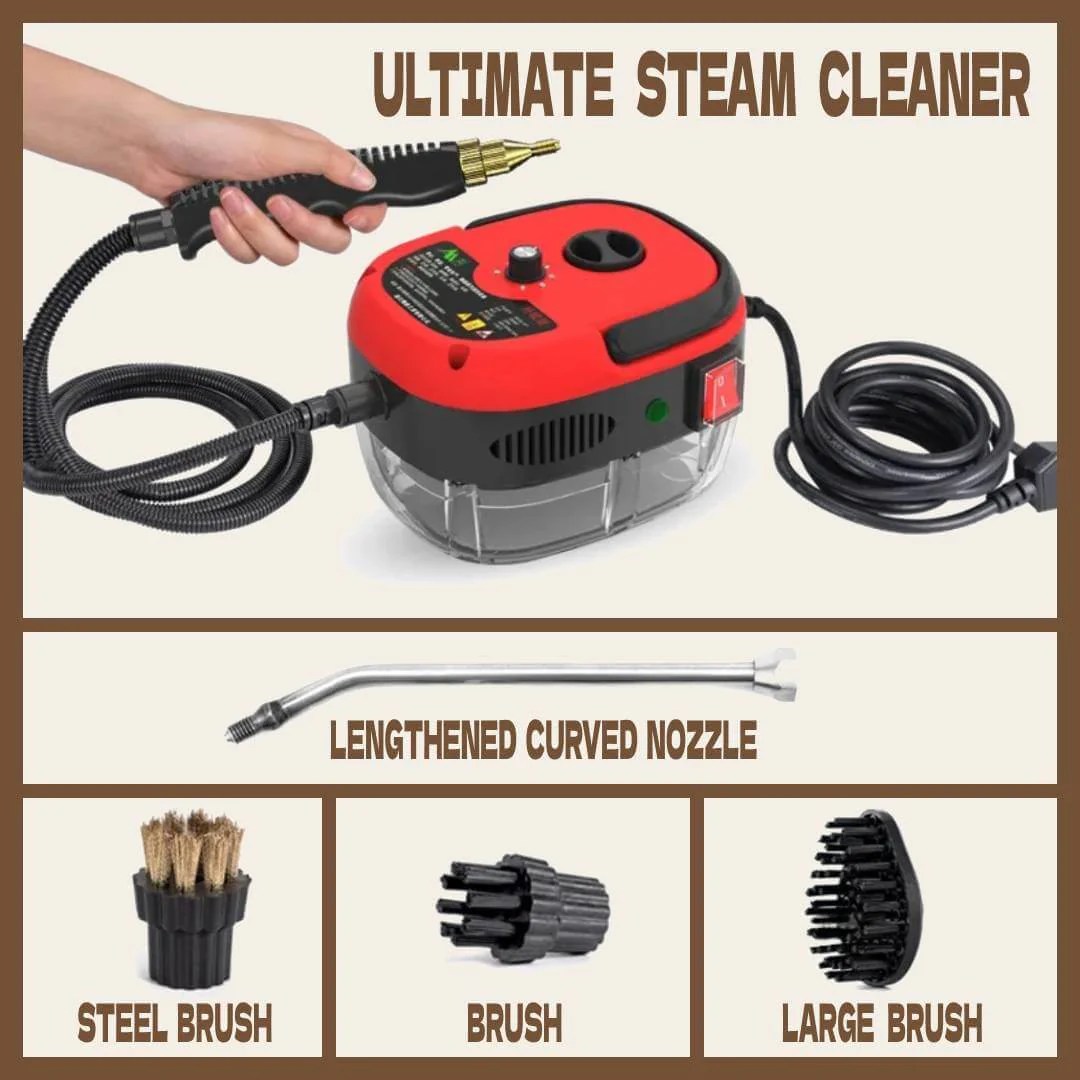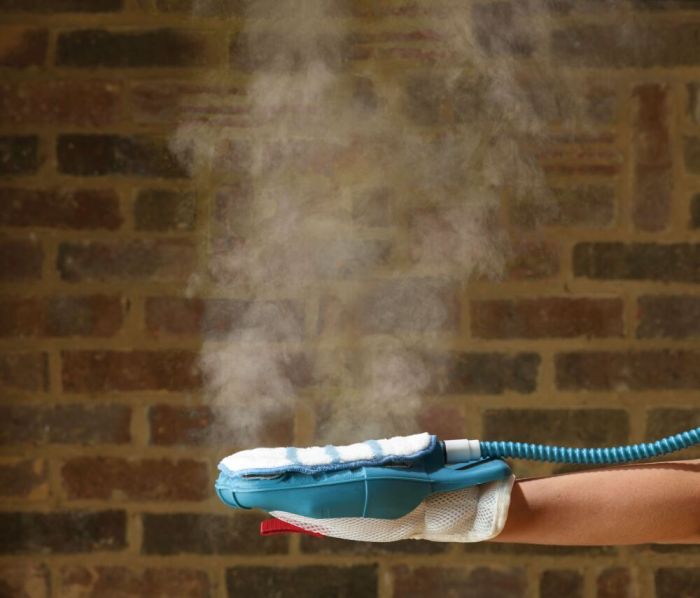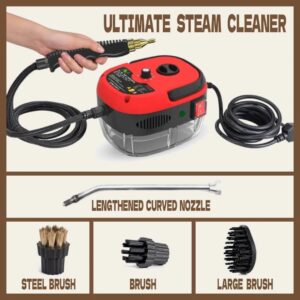
Steam cleaning tools for home are revolutionizing the way we approach cleaning, offering a powerful and efficient method that not only disinfects but also rejuvenates surfaces. Imagine tackling tough grime and stubborn stains without the need for harsh chemicals, all while being environmentally friendly! This guide delves into the various steam cleaning options available for residential use, their impressive benefits, and how they stand up against traditional cleaning methods.
From compact handheld models to robust canister cleaners, steam cleaning tools come in many shapes and sizes, each designed to make your cleaning routine more effective. We’ll explore key features to consider when choosing a steam cleaner, helpful maintenance tips, and safety precautions to ensure you get the most out of your cleaning experience.
Overview of Steam Cleaning Tools
Steam cleaning tools have transformed the way we maintain clean and hygienic living spaces. Utilizing the power of steam, these tools not only remove dirt and grime but also sanitize surfaces without the need for harsh chemicals. This innovative cleaning method is gaining popularity among homeowners seeking efficient and eco-friendly cleaning solutions.Steam cleaners harness the natural cleaning properties of high-temperature steam to penetrate and lift dirt from a variety of surfaces, including carpets, upholstery, floors, and kitchen appliances.
The benefits of using steam cleaning tools include improved indoor air quality, reduced reliance on chemical cleaners, and the ability to eliminate allergens, bacteria, and viruses. These tools are versatile and can be used for various applications, making them a valuable addition to any household cleaning arsenal.
Types of Steam Cleaners for Home Use
Understanding the different types of steam cleaners available can help homeowners choose the right tool for their cleaning needs. Each type offers unique features suited for specific cleaning tasks. Here’s a breakdown of the common types of steam cleaners:
- Handheld Steam Cleaners: Compact and portable, these cleaners are perfect for spot cleaning and tackling smaller areas. They are ideal for cleaning kitchen counters, bathroom fixtures, and even car interiors.
- Canister Steam Cleaners: These versatile models come with a separate water tank and can be used on a variety of surfaces, including floors and upholstery. They typically include multiple attachments for different cleaning purposes.
- Upright Steam Cleaners: Designed primarily for cleaning carpets and rugs, these models resemble traditional vacuum cleaners. They are equipped with a large water tank and powerful steam output to effectively clean and sanitize carpet fibers.
- Steam Mops: Specifically designed for hard floors, steam mops combine the functionality of a mop with steam cleaning capabilities. They are effective in removing stubborn stains and disinfecting tile, laminate, and hardwood surfaces.
Comparison of Steam Cleaning Tools and Traditional Cleaning Methods
When considering the best cleaning methods for home use, comparing steam cleaning tools with traditional approaches reveals significant differences. Traditional cleaning often relies on chemical solutions and scrubbing, which may not only be less effective but could also leave harmful residues. Here are some key points of comparison:
- Effectiveness: Steam cleaning penetrates surfaces deeply, ensuring that dirt, grease, and allergens are thoroughly eliminated. In contrast, traditional methods may leave behind residue and fail to sanitize surfaces effectively.
- Environmental Impact: Steam cleaning primarily uses water and heat, significantly reducing the need for chemical cleaners. This makes it a more environmentally friendly option compared to traditional cleaning methods that often rely on harsh chemicals.
- Time Efficiency: Steam cleaners often reduce cleaning time by quickly loosening dirt and grime, thus minimizing the effort required for scrubbing. Traditional methods usually involve more manual labor and time-consuming processes.
- Health Benefits: The use of steam cleaning tools helps eliminate bacteria and allergens, promoting a healthier living environment. Traditional cleaning methods may not provide the same level of sanitization, potentially leaving harmful microorganisms in the home.
Steam cleaning offers a powerful, eco-friendly solution for maintaining a spotless and healthy home.
Key Features to Consider

When selecting steam cleaning tools for your home, understanding the key features is essential to ensure you make an informed decision. These features not only affect the efficiency and effectiveness of the cleaning process but also enhance the overall user experience and versatility of the tool. Below, we will explore the critical elements to look for in steam cleaners, including versatility, attachments, tank capacity, and heat-up time.
Essential Features of Steam Cleaning Tools
The effectiveness of steam cleaning tools largely depends on specific features that enhance their functionality. Considering these features enables users to maximize cleaning performance and convenience.
- Versatility: A steam cleaner that can tackle multiple surfaces—such as carpets, hard floors, upholstery, and even windows—offers great value. Versatile units often come with adjustable steam settings and various attachments that cater to different cleaning tasks.
- Attachments: The inclusion of specialized attachments can significantly improve a steam cleaner’s performance. Common attachments like brushes, nozzles, and pads are designed for specific surfaces or tasks, allowing you to customize your cleaning routine.
- Tank Capacity: Larger tank capacities allow for longer cleaning sessions without frequent refills. This is particularly important for larger homes or extensive cleaning projects, as a bigger tank ensures continuous steam production, enhancing efficiency.
- Heat-Up Time: The time it takes for a steam cleaner to heat up is crucial for immediate cleaning needs. Models that heat up quickly save time and provide convenience, especially for spontaneous cleaning tasks or when guests arrive unexpectedly.
“A steam cleaner’s versatility and efficient design can transform your cleaning routine, making it simpler and more effective.”
By focusing on these key features, you can select a steam cleaner that not only meets your cleaning requirements but also offers flexibility and ease of use, ensuring optimal performance in your home cleaning tasks.
Maintenance and Usage Tips

Steam cleaning tools are efficient and powerful devices that can transform your home cleaning routine. Proper usage and maintenance are crucial to ensure their longevity and effectiveness. Understanding how to operate these machines safely and efficiently will enhance their performance and keep your home sparkling clean.
Step-by-Step Guide to Using Steam Cleaning Tools
Using steam cleaners effectively requires a systematic approach. Here’s a step-by-step guide to get you started:
1. Preparation
Clear the area you plan to clean. Remove furniture and any obstacles that may hinder your cleaning process.
2. Fill the Water Tank
Use distilled water to fill the tank, as tap water can lead to mineral buildup. Ensure the tank is securely attached.
3. Heat Up the Machine
Plug in the steam cleaner and allow it to heat up. This usually takes a few minutes.
4. Choose the Right Attachment
Depending on the surface you’re cleaning, select the appropriate nozzle or brush. For instance, a wide nozzle works well on floors, while a detail nozzle is great for corners and tight spaces.
5. Test on a Small Area
Before tackling the entire surface, test the steam cleaner on a small, inconspicuous area to check for any adverse reactions.
6. Start Cleaning
Begin steaming by moving the cleaner slowly over the surface. Allow the steam to penetrate for a few seconds before wiping with a cloth.
7. Empty and Clean the Tank
Once done, turn off the machine, unplug it, and empty any remaining water. Rinse the tank with clean water to prevent buildup.
Maintenance Tips for Steam Cleaners
To keep your steam cleaner in optimal condition, regular maintenance is essential. Here are some practices that can extend the life of your device:
Empty the Water Tank After Each Use
This prevents mineral deposits from settling inside the tank.
Clean the Filters Regularly
Check if your steam cleaner has filters and clean or replace them as indicated in the user manual.
Inspect the Hose and Attachments
Look for any signs of wear or damage. Replace any worn-out parts to maintain efficiency.
Descale the Machine
If you notice a reduction in steam output, it may be time to descale. Use a mixture of vinegar and water according to the manufacturer’s instructions.
Store Properly
After cleaning, store the steam cleaner in a dry place and avoid wrapping the cord too tightly, which can damage it.
Safety Measures and Precautions
When using steam cleaning tools, safety should always be a priority. Here are important precautions to keep in mind:
Read the Manual
Familiarize yourself with the specific safety instructions and operational guidelines provided by the manufacturer.
Avoid Direct Skin Contact
The steam can cause burns. Always keep a safe distance and use the attachments as intended.
Keep Away from Children and Pets
Ensure that children and pets are at a safe distance while operating the steam cleaner.
Use in Well-Ventilated Areas
Steam can create a lot of humidity; ensure the area is well-ventilated to avoid condensation or mold growth.
Check Electrical Cords
Inspect the power cord for any damage before use. Never use an appliance with a frayed or damaged cord.
“Proper maintenance and safety practices ensure not only the longevity of your steam cleaner but also the safety of your home environment.”
Final Conclusion
In conclusion, steam cleaning tools for home not only simplify the cleaning process but also elevate it, providing a deeper clean without the use of harmful substances. By understanding the types of steam cleaners and their features, as well as following safe usage and maintenance practices, you can transform your cleaning routine into something both efficient and enjoyable. Embrace the steam revolution and discover a cleaner, healthier living space!
General Inquiries
What surfaces can I use steam cleaning tools on?
Most steam cleaners are safe for a variety of surfaces, including tile, hardwood, carpets, and upholstery, but it’s important to check the manufacturer’s guidelines for specific materials.
How often should I use a steam cleaner at home?
This depends on your specific cleaning needs, but regular use every few weeks can help maintain cleanliness and hygiene, especially in high-traffic areas.
Do I need to use any cleaning solutions with a steam cleaner?
No, steam cleaners typically use only water to create steam, making them an eco-friendly option. However, some models allow the use of cleaning solutions for enhanced results.
How long does it take for a steam cleaner to heat up?
Heating times vary by model, but most steam cleaners can heat up in about 5 to 15 minutes, depending on the tank size and wattage.
Can steam cleaning tools kill germs and bacteria?
Yes, the high temperatures of steam can effectively kill many types of germs, bacteria, and allergens, making steam cleaning a great choice for sanitizing your home.




